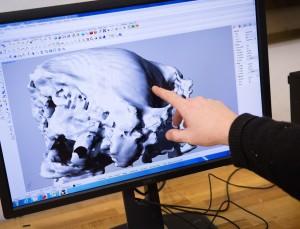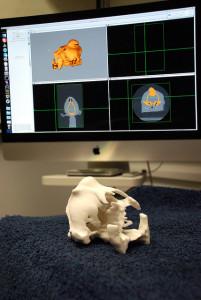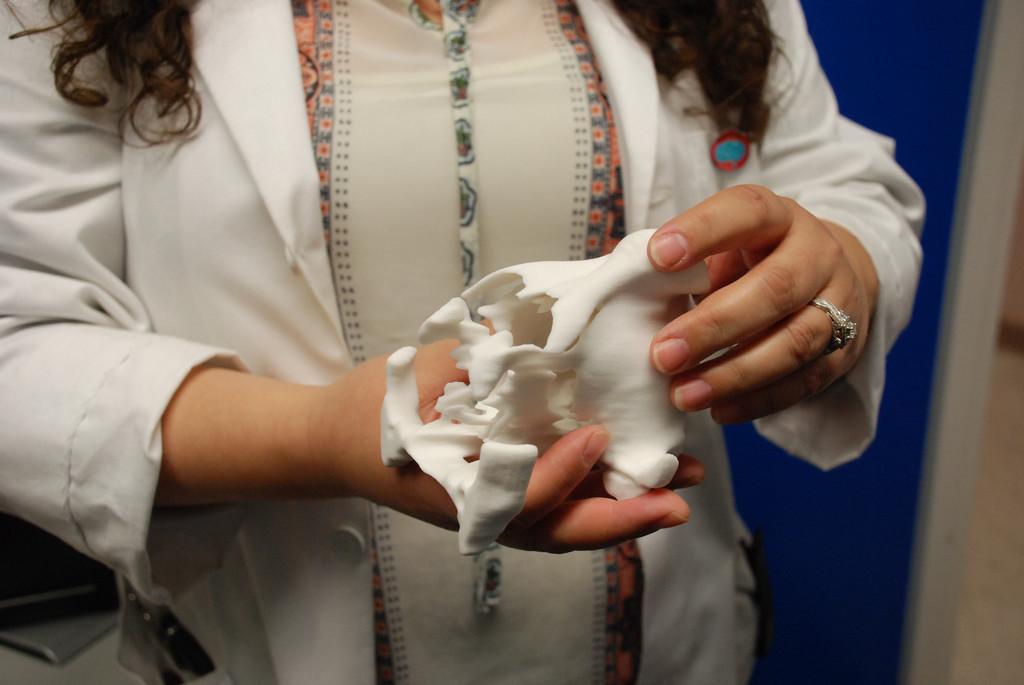 Most animal lovers have known the sorrow of losing a beloved pet. It’s horrible, especially when you have to make the decision to put an animal to sleep because of a painful, untreatable illness. I’ve had to say goodbye to many dogs and cats in my lifetime, and it’s a terrible feeling to know that there’s nothing you can do to help a pet you’ve loved for years. (I’m getting teary right now – darn it.) Some bright news for pet owners is on the horizon, though. It’s becoming widely known that 3D printing is saving the lives of humans with all sorts of serious medical conditions, but now veterinarians are beginning to realize that the same technology can be used to help our animal friends as well.
Most animal lovers have known the sorrow of losing a beloved pet. It’s horrible, especially when you have to make the decision to put an animal to sleep because of a painful, untreatable illness. I’ve had to say goodbye to many dogs and cats in my lifetime, and it’s a terrible feeling to know that there’s nothing you can do to help a pet you’ve loved for years. (I’m getting teary right now – darn it.) Some bright news for pet owners is on the horizon, though. It’s becoming widely known that 3D printing is saving the lives of humans with all sorts of serious medical conditions, but now veterinarians are beginning to realize that the same technology can be used to help our animal friends as well.
Evelyn Galban, a neurosurgeon who lectures at the University of Pennsylvania’s School of Veterinary Medicine, agrees. Dr. Galban recently became acquainted with a dog named Millie, who was brought in with a large tumor in her skull, one that was going to be difficult to treat – unless the vet could plan out the surgery ahead of time. Dr. Galban enlisted the help of the School of Design’s Fabrication Lab to turn Millie’s CAT scan data into 3D models, which were used to 3D print a replica of the dog’s skull. The gypsum model, which took about 6 hours to print, allowed Dr. Galban to closely examine the tumor, which protruded out from the top of Millie’s skull as well as inward, impacting her brain.
“It’s difficult to fully understand the malformation until we have it in our hands,” Dr. Galban said. “That usually doesn’t happen until we’re in surgery.”
 The replica will allow Dr. Galban to carefully plan and practice the surgery ahead of time, avoiding possible mistakes and risks that could be life-threatening during an actual surgery. In addition, the removal of the tumor was going to leave Millie with a very soft spot in her head, one that would need to be covered with a titanium mesh plate to protect her brain. Rather than having to keep Millie in surgery for a longer time while the surgical team measured, fabricated and fitted the plate to her skull, Dr. Galban is able to design the plate and fit it to the 3D model so that it can be quickly attached to Millie’s real head during surgery.
The replica will allow Dr. Galban to carefully plan and practice the surgery ahead of time, avoiding possible mistakes and risks that could be life-threatening during an actual surgery. In addition, the removal of the tumor was going to leave Millie with a very soft spot in her head, one that would need to be covered with a titanium mesh plate to protect her brain. Rather than having to keep Millie in surgery for a longer time while the surgical team measured, fabricated and fitted the plate to her skull, Dr. Galban is able to design the plate and fit it to the 3D model so that it can be quickly attached to Millie’s real head during surgery.
We’ve seen this type of technology being used with more frequency in human surgeries, so it shouldn’t be surprising that it’s now starting to appear in veterinary procedures as well. Dr. Galban is working with PennDesign’s Stephen Smeltzer and Dennis Pierattini, along with veterinary residents Jon Wood and Leontine Benedicenti, to create 3D printed models of other dogs and cats suffering from deformities or injuries. Not only can these models help the individual animals, but they can also serve as valuable training aides for veterinary students.
“These objects have opened up to have applications in the real world, and that’s fascinating and enjoyable to see,” said Smeltzer. “Last week I had no idea that this was going to be happening, and now all of a sudden I have a vested interest in Millie.”
You can hear Dr. Galban describe the technology in greater detail here below. Are you surprised to hear that veterinarians are getting in on this technology too? Discuss in the 3D Printed Surgical Models for Animal Treatment & Training forum over at 3DPB.com.
[Images: University of Pennsylvania]Subscribe to Our Email Newsletter
Stay up-to-date on all the latest news from the 3D printing industry and receive information and offers from third party vendors.
You May Also Like
3D Printing Unpeeled: New Arkema Material for HP, Saddle and Macro MEMS
A new Arkema material for MJF is said to reduce costs per part by up to 25% and have an 85% reusability ratio. HP 3D HR PA 12 S has been...
3D Printing News Briefs, January 20, 2024: FDM, LPBF, Underwater 3D Printer, Racing, & More
We’re starting off with a process certification in today’s 3D Printing News Briefs, and then moving on to research about solute trapping, laser powder bed fusion, and then moving on...
3D Printing Webinar and Event Roundup: December 3, 2023
We’ve got plenty of events and webinars coming up for you this week! Quickparts is having a Manufacturing Roadshow, America Makes is holding a Member Town Hall, Stratafest makes two...
Formnext 2023 Day Three: Slam Dunk
I’m high—high on trade show. I’ve met numerous new faces and reconnected with old friends, creating an absolutely wonderful atmosphere. The excitement is palpable over several emerging developments. The high...

































